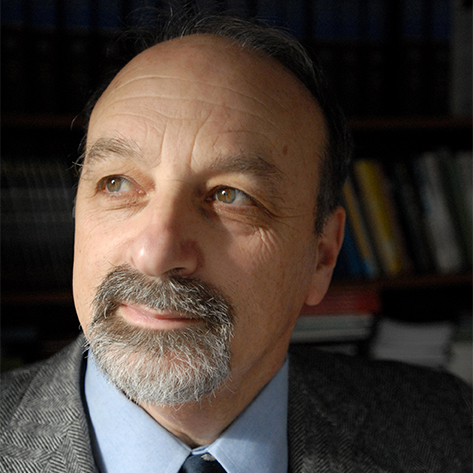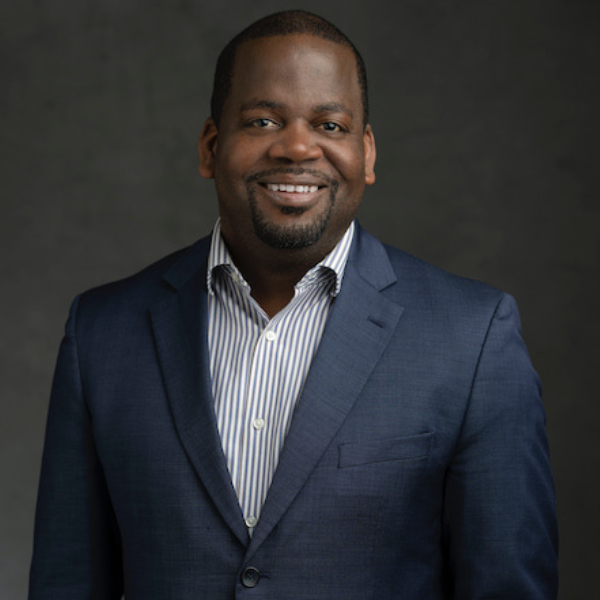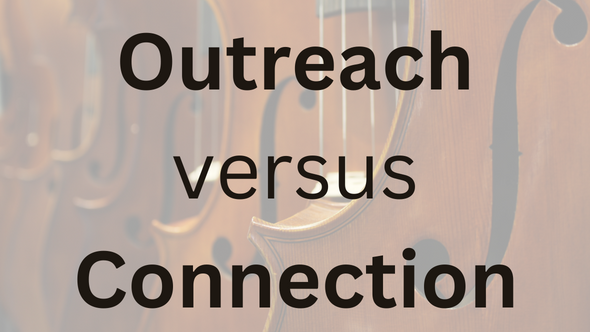The journey towards a more equitable future for nonprofit arts organizations starts in the boardroom and too often ends there, as well. This issue of On Our Minds, the second in a series examining more equitable practices, reflects openly and self-critically on the underlying processes, assumptions, and structures driving strategic planning and what would make them more equitable.
“Stanford Thompson, Founder and Executive Director of Play On Philly, has extensive experience with strategic planning. He and I have collaborated on several strategic plans, including for his own organization and, most recently, for the Office for the Arts at Harvard University. I interviewed him on February 21, 2022, on the topic of equity and strategic planning.”
– Dr. Thomas Wolf

Thomas Wolf (TW): Thanks, Stan, for taking the time to talk to me about equity and strategic planning. Clearly, diversity, equity, inclusion, and belonging (DEIB) have become very prominent in the thinking of nonprofit leaders in recent years. The racial reckoning following the murder of George Floyd in 2020, the Black Lives Matter movement, the fundamental reassessments of mission and program during the COVID pandemic, and many other factors have played a part. With so much change, do you believe that strategic planning should be rethought?

Stanford Thompson (ST): First, let me say, let’s not throw out the baby with the bathwater. Many of the essentials of strategic planning need to remain the same as they have always been: a reconsideration of mission, vision, and values; an analysis of organizational opportunities and threats; a well-thought-out presentation of options for the future, a setting of achievable priorities, and an assessment that ensures that the proper resources – both human and financial – are in place to accomplish whatever goals and action steps are ultimately decided upon by the board. That being said, I do believe that today, DEIB issues need to be embedded not only in every goal and strategy of a strategic plan but also in the process itself.
TW: What do you mean by embedding DEIB “in the process itself?”
ST: It starts with carefully analyzing an organization’s dominant norms, assumptions, and the individuals around the planning table. Suppose an organization has always taken the position that anything new has to be paid for—who can disagree with that? But it is then all too easy to say, “the DEIB ideas are good ones, and when we have enough money to pay for them, we should pursue them.” That is an almost certain way to kill those ideas and initiatives. Rather, consider saying, “These ideas are so important; we need to make a place for them now, even if it means some other things have to go.” Or there is another possibility that may be even more compelling: build multi-dimensional cross-cultural strategies in existing programs considering what is happening in the world today. Your current activities can evolve—you don’t necessarily need to give them up. But you do need to decide how to redesign them so that they are infused with DEIB priorities.
TW: You also spoke about analyzing who is around the table. Can you expand on that?

ST: Yes, you must consider people in the process. Who gets to decide? Is it the board? Even if your board is diverse, who dominates the conversation? How can we make that more inclusive? Beyond that, how do you involve your target population in the planning conversation? Is there a diversity of voices on some sort of steering committee or any of the individual working groups you might set up? Also, in addition to considering who is participating, ask yourself how their perspectives can be prioritized. Are you holding some focus groups early in the process, feeling good that people have spoken, and then leaving it at that? Or are you returning to those folks once you have come up with some initial ideas and inviting their feedback?
TW: I get the idea that it is desirable to have participation at all levels. But can it ever be too much? As a consultant who has to guide the process toward the ultimate development of a final product, I worry about the possibility of creating so much friction and so many divergent ideas that you cannot move forward toward closure. My own experience is that, at some point, a group needs to close off debate and make hard decisions.
ST: I fully agree that, at some point, there needs to be closure. But I do not subscribe to the idea that friction is bad. What is bad is having a dominant group make decisions with inadequate diverse input. Let me give you an example. Early on in my organization, some board members felt we had to develop a business model that was less reliant on philanthropy. An idea was put forward that we should move many of our activities to private schools that could pay for them, thus providing a “consistent” revenue stream to minimize our fundraising responsibilities. Many of us were very much opposed to the idea. We felt that once the organization went down that road, the whole character of the organization and power structure would shift negatively. What we proposed, which was financially riskier, was to engage with the funders, encouraging them to give more in light of our desire to eliminate all barriers to access to high-quality music education. We told our funders that we would not divide our limited human resources to benefit more privileged communities who would overpay to subsidize the music education experience of others. Our funders got it, and we were rewarded manifold.
TW: One of the questions that I get in discussions of DEIB in strategic planning is whether it should be treated as a distinct goal with its own set of action steps or whether it should suffuse every goal.
ST: I believe strongly in the latter idea – suffusing DEIB in every goal and strategy. It is too easy to put diversity, equity, inclusion, and belonging on its own separate island by making it a separate goal. It makes lots of people in the organization much more comfortable. The feeling is: “Oh great—that is someone else’s problem.” But DEIB has to be everyone’s problem – or better yet – everyone’s opportunity. Whether your goals include programming, governance, staffing, fundraising, facilities, or anything else—each must prioritize DEIB.
TW: Should every strategic plan have an updated diversity and inclusion statement to go along with mission, vision, and values?
ST: It doesn’t hurt to have such a statement. But I see it as a means to an end. I long for the day when such statements are unnecessary—where DEIB is so infused in an organization’s culture that it is second nature. Do arts organizations need clarifying statements on the importance of excellence? Most don’t have them because they are not needed. Excellence is a value embedded in the organization. But we are not there yet with DEIB, so an aspirational statement can be valuable if it doesn’t preclude hard-hitting, actionable results.
TW: What do you mean by “hard-hitting, actionable results?”
ST: Look, one of the things that frustrated people not in the dominant cultural group around the table are well-meaning words that no one will disagree with that serve in place of actions that are time-bound and measurable. It is one thing to say, “Our board should be more diverse, and we will do everything we can to make it so.” It is quite another to say, “Within five years, our board will be one-third individuals of color.” Or what about, “In the next round of recruiting for a senior professional, 1/3 of the final candidates need to be people of color.” Organizational leaders need to have the courage to make strategic plan action steps specified in this way.
TW: Are you saying that, in a strong organization, words should not matter so much?

ST: No, that is not what I am saying. Words do matter. They matter a lot. And I do not mean simply whether you use the words “Latino/Latina” versus the term “Latinx/Latine” to describe people of a certain background, though one should always be sensitive to updated terminology. What I mean are the much more subtle words like “poor people” and “underprivileged kids”—terminology that emphasizes deficits. We should also watch out for words that suggest that one group is providing some form of charity to another. “Outreach” is just such a word, implying that people with resources are going to reach out and share some of those resources with those who are deprived. Today, we have replaced the concept of “outreach” with that of “connection.” The transaction between an organization and a constituent is one of exchange where each side has something to give the other. Every one of our teaching artists will tell you that they have grown as people through their interaction with our constituents.
TW: Is there anything else you want to add to this topic?
ST: Yes, it is important to remember that organizations that have grown out of marginalized communities or have been established to serve them are often newer, smaller, undercapitalized, entrepreneurial entities. Their boards and staffs generally have limited experience with strategic planning and do not have the luxury of long, drawn-out processes. Yet, their needs are as great – or sometimes greater – than long-established organizations when thinking about the future. It is incumbent on funders to help guide them toward effective planning by providing necessary financial assistance and advice. Consultants must design simple, efficient, results-oriented processes to help these organizations achieve the next steps in their development.
TW: You set a high standard for all of us, Stan —many thanks for helping us to think through these ideas. I hope you will continue to be a resource that people can turn to for advice of this kind.
More about Stanley Thompson
Stanford Thompson is a musician and educator who serves as the Founder and Executive Director of Play On Philly and Founding Board Chairman of El Sistema USA and the National Instrumentalist Mentoring and Advancement Network. Recognized as a TED Fellow, Stanford believes that music is a powerful tool for positive personal and community change. Mr. Thompson serves on the faculty of the Global Leaders Program and regularly presents for major arts and business conferences, institutions, and stakeholders about leadership, entrepreneurship and social justice. As a principal of Goldsmith Strategies, he has guided the strategic development of dozens of organizations across the United States while collaborating with local and national initiatives to develop new strategies and programs that provide equitable access to the arts.
More about Thomas Wolf
Dr. Thomas Wolf’s career spans over four decades and encompasses the fields of philanthropy, education, and the arts. He established the Cambridge office of WolfBrown in 1983. Prior to that he served as the founding Director of the New England Foundation for the Arts for seven years. His clients have included ten of the 50 largest US foundations and government agencies. Examples include the National Endowment for the Arts, and treasured international cultural institutions like the British Museum, the Boston Symphony Orchestra, and The Kennedy Center.

This is piece is part of our series on equity and strategic planning. You can read other posts here:
- Centering Democracy in Strategic Planning: Alan Brown discusses how centering cultural democracy in artistic organizations’ work might lead to equity in strategic planning.
- Walking the Equity Walk: Joseph H. Kluger considers how organizations might use core values to support attaining goals of diversity, equity, and inclusion.

